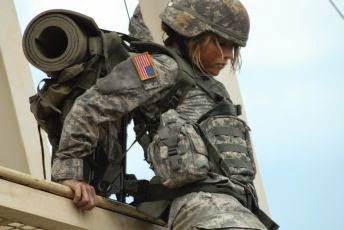Suriya al Kubra!
Russia has a way lately of turning the unthinkable into the possible.
Watching Assad’s position weaken, Russia has chosen to intervene, not just to rescue him but to fundamentally turn around its engagement with the West.
Russia is signaling that it is deploying for an air support and a train-and-equip mission in Syria. Given the prevalence of MANPADS in Syria, Russian forces are unlikely to launch a major air campaign on Assad’s behalf and put its assets at risk. Air campaigns are an expensive business to support logistically, and risking its brand new tactical air fleet over Syria is not something the Kremlin would be eager to do.
The introduction of Russian aircraft is likely a feint, disrupting Washington’s plans for a no-fly zone in Northern Syria and imposing a situation that necessitates the restoration of military contacts between the two countries. Furthermore, it now places Washington before a difficult question: What happens if Russia conducts air strikes against U.S. backed rebel forces that may be protected by U.S. airpower over a “safe zone”? Moscow’s goal is to present this scenario as a potential problem to push Washington to reconsider its policies in Syria.
Russia was cautious in the way that it sent its forces to fight in Ukraine and settled on an economy of force approach. We should expect Moscow will be even more reticent about direct combat in Syria. Given the prevalence of man-portable air defense systems (MANPADS) in Syria and the cost of a sustained air campaign, Russia is unlikely to risk its brand new tactical air fleet in major operations. Ground combat is equally unlikely because deployments on a large scale would quickly rekindle not-so-distant memories of years spent fighting Islamic militants in Chechnya and Afghanistan, both of which were highly unpleasant experiences that left marks on the Russian psyche.
Moreover, since the various groups fighting against Assad, are awash with anti-tank and anti-air guided munitions, direct Russian participation in ground combat would get ugly fast. But, perhaps more significantly, a sustained Russian ground campaign in Syria is unrealistic because the Russian military lacks the logistics to maintain a large ground presence in the country. Russia’s navy depends on an arsenal of older Soviet landing ships supplemented by expensive air lift via transports. A large military presence requires supplies, troop rotations, and an expeditionary capability that Russia would find difficult if not impossible to support.
Russia’s pledge to consider Syrian requests for additional troops does not mean it is eager to send forces to fight alongside Assad’s army. Instead, Moscow’s preference remains having Iranian Shiite militias and Hezbollah supplement Syria’s army on the battlefield. Russia’s intervention in Syria is more of a strategic disruption to Western plans than a larger commitment to Assad. At home, Russia is trying to demonstrate that it is more than a regional power and hopes to leverage its intervention to achieve larger strategic goals, but the plan only works if that the intervention stays small. We are once again looking at a limited, but decisive, use of force to achieve political ends.
Great Satan faces a conundrum. Once Russia completes its deployment, She can completely undermine the effort in Syria, from no-fly zones to opposition proxies.















0 comments:
Post a Comment